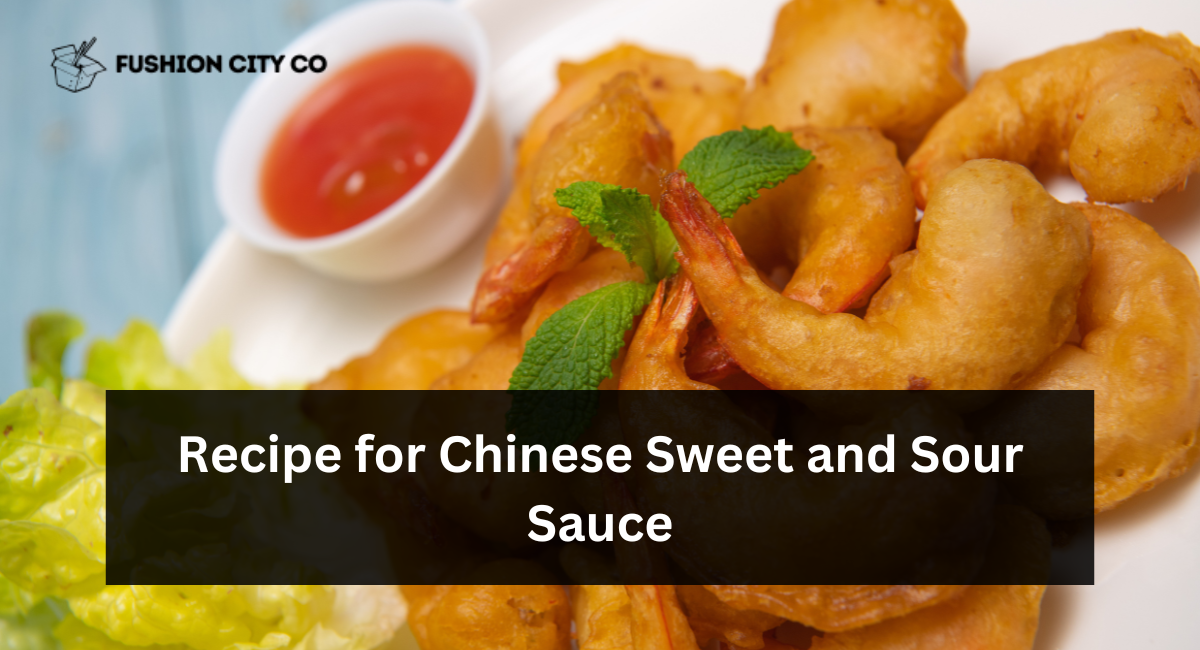This is a quick recipe for homemade Chinese sweet and sour sauce that tastes exactly like the sauces you get from Chinese takeout joints and doesn’t include any ketchup, pineapple, or food coloring.
Sweet and Sour Sauce: What Is It?
One of the most widely used Asian sauces, not just for Chinese food, is the sweet and sour sauce. There are two kinds of sweet and sour sauces used in Thai cuisine: the well-known Thai sweet chili sauce, which has more garlic and chili flakes for a spicy kick, and the Korean sweet and sour sauce, which is made of sugar and vinegar without the red color and is mainly used in Korean sweet and sour chicken (tangsuyuk).
With a combination of sweetness and tang, this easy homemade Chinese sweet and sour sauce recipe resembles a Hong Kong-style sauce. I made it without pineapple juice or ketchup to have less sweetness than the original American recipe.
Tomato Paste: Since tomato paste has much more flavor than ketchup, I like to use it instead of the condiment. There is also a lot more umami flavor in tomato paste.
Sugar: You may use brown sugar or honey instead of the cane sugar I use in this recipe. If you use brown sugar, the color of the sauce might not be as bright red.
White Vinegar: I like to use white vinegar for this sauce because it’s readily available and adds a tangy flavor without tasting like anything else. If necessary, you can also use rice vinegar in its place.
Soy Sauce: I use soy sauce as the savoriness to combine the flavors and give the sauce the perfect balance of sweet and sour. It also adds a small amount of umami.
Oil: Make use of flavorless, neutral oils. When I cook, I like to use avocado oil. To enhance the taste, we toast the tomato paste in the oil.
Garlic Clove (Optional): To add a little taste to the sauce, I like to mash in a clove of garlic. The flavor is subdued because it doesn’t cook in the sauce for very long.
Corn starch is what gives the sauce its thickness.
Chili Flakes/Cayenne/Sriracha (Optional): You can incorporate cayenne, sriracha, or chili flakes into a spicy sweet and sour sauce.
How to Prepare Sour and Sweet Sauce
This recipe has four main steps for sweet and sour sauce, making it quite simple. Prepare the sauce mix, toast the tomato paste in a pot, pour in the sauce mix, and thicken it with a cornstarch slurry!
Getting Ready
blend the ½ cup of cold water and the 1½ tablespoons of cornstarch in a small bowl, stirring to mix thoroughly. Next, thoroughly combine ½ cup white vinegar, ½ cup sugar, and 2 teaspoons soy sauce.
Take care not to incorporate the tomato paste and oil into this.
(Details optional) If adding flavor with garlic, peel it and mash it open with a knife, leaving the clove intact to make removal easier later.
Preparing the Sour and Sweet Sauce
Place a small saucepan on a medium-low burner.
Stir in 2 tablespoons oil, optional garlic clove, and 4 tablespoons tomato paste. Cook for about 5 minutes until the oil becomes orange and the tomato pastes take on a deeper red hue.
To enhance the taste of sweet and sour sauce, tomato paste is roasted in oil.
After using a utensil to re-mix the cornstarch and sauce in the bowl containing the remaining ingredients (starch tends to sink to the bottom), transfer the mixture into the saucepan containing the tomato paste and stir rapidly for approximately five minutes until the sauce thickens.
To avoid clumps in your sauce, whisk often throughout this stage.
Add a clove of garlic when cooking the sauce to enhance its taste.
If you used a garlic clove, remove it by fishing it out with a spoon.
Adding one to three tablespoons more water can dilute the sauce more.
If you want more taste, stir in more Worcestershire sauce.
Using a wooden spoon, demonstrate the thickness and red hue of the sweet-and-sour sauce.
Advice
With a combination of sweetness and tang, this easy homemade Chinese sweet and sour sauce recipe is more akin to Hong Kong-style sauce and will have less sweetness than its American counterpart. Add one or two teaspoons less vinegar if you prefer it sweeter.
If you’d instead not use sugar, honey can be used in its place.
It’s not a traditional ingredient, but sometimes I add a little Worcestershire sauce for extra flavor. This component is optional.
Mix in some chili flakes, sambal oelek, or sriracha to turn it into a hot and sour sauce.
If you want to prepare a larger quantity, you may freeze this! To reheat it, defrost it in the refrigerator and microwave! (Many thanks to Carol Farquharson for the suggestion!)
Conclusion:
In conclusion, mastering the art of creating Chinese Sweet and Sour Sauce at home opens up a world of flavor possibilities for your favorite dishes. With its perfect balance of sweetness and acidity, this versatile and tangy condiment adds a delightful touch to various cuisines. As we’ve explored in this comprehensive guide, creating this iconic sauce is surprisingly simple, requiring just a few key ingredients and a bit of culinary finesse. With the ability to customize the sweetness, tanginess, and thickness to suit your taste, you can elevate your homemade dishes to restaurant-quality standards. So, say goodbye to store-bought versions and embrace the satisfaction of crafting your own authentic Chinese Sweet and Sour Sauce.

Leave a Reply